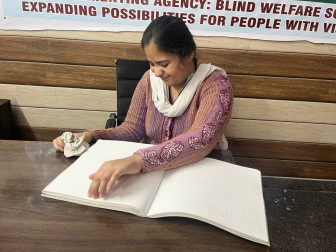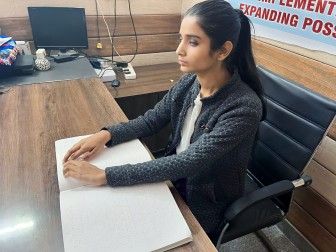Effective communication is a fundamental part of our daily lives, yet for individuals who are visually impaired, achieving inclusivity requires specific tools and techniques. Inclusive communication ensures that all individuals, regardless of their visual abilities, can participate fully and meaningfully in conversations and interactions. This blog explores essential tools and techniques that enhance communication for the visually impaired, promoting accessibility and engagement.
Inclusive communication refers to practices and tools that ensure everyone can access, understand, and contribute to conversations and information. For the visually impaired, this means adapting communication methods and using assistive technologies to bridge gaps that may arise due to visual impairments.
Screen Readers: Screen readers are software programs that convert text on a screen into spoken words or braille. This tool is essential for accessing digital content, including emails, websites, and documents. Popular screen readers include JAWS (Job Access With Speech) and NVDA (NonVisual Desktop Access).
Braille Displays: Braille displays are electronic devices that translate text from a computer or mobile device into braille. They allow visually impaired users to read text through tactile means, enabling them to access information and interact with digital content.
Voice Assistants: Voice-activated assistants like Amazon’s Alexa, Google Assistant, and Apple’s Siri offer hands-free control over various devices and services. They can read text aloud, provide information, and perform tasks based on voice commands, making them valuable tools for managing daily activities.
Accessible Formats: Providing information in accessible formats is crucial for inclusive communication. This includes offering documents in braille, large print, or audio formats. Accessible PDFs and websites with proper tagging can also ensure that content is navigable by screen readers.
Assistive Listening Devices: For individuals who are visually impaired and also have hearing difficulties, assistive listening devices such as FM systems or personal amplifiers can enhance auditory access to spoken information in various settings.
Speech-to-Text Software: Speech-to-text software allows users to convert spoken words into written text. This technology is useful for creating documents, sending messages, and participating in written communication without the need for visual input.
Descriptive Audio: Descriptive audio provides spoken descriptions of visual elements in media, such as movies or television shows. This technique helps visually impaired individuals understand and enjoy visual content through detailed verbal descriptions.
Tactile Symbols and Maps: Tactile symbols and maps use raised textures or braille to convey information about physical spaces or objects. These tools are especially useful in navigating unfamiliar environments and understanding spatial layouts.
Clear and Direct Language: Use simple, clear, and direct language to convey information. Avoid jargon and ambiguous terms to ensure that messages are easily understood.
Verify Accessibility: Ensure that digital content, documents, and communications are accessible by testing them with various assistive technologies. Solicit feedback from visually impaired individuals to identify and address potential barriers.
Provide Alternatives: When possible, offer multiple formats for information dissemination. This includes providing both digital and physical copies of documents, as well as verbal and written communication options.
Respect Privacy and Independence: Allow visually impaired individuals to choose their preferred communication methods and respect their privacy. Avoid making assumptions about their needs and preferences.
Educate and Train: Educate staff, colleagues, and community members about inclusive communication practices. Training can help raise awareness and promote a culture of accessibility and respect.
Inclusive communication is essential for ensuring that visually impaired individuals can fully participate in conversations and access information. By utilizing assistive technologies and adopting best practices, we can create a more inclusive and accessible environment for everyone. Embracing these tools and techniques not only enhances communication but also promotes equality and empowerment for the visually impaired community.
By contributing to our feature donation campaigns, you are not just supporting us,
you are fostering independence, education, and accessibility for the people with blindness.
We are providing free shelter, food and educational support to the abandoned visually impaired girls residing at BWS.
₹1146562
raised of ₹2000000 Goal
57%
2 Days left
573 Supporters
Maa and Papa weren’t the happiest when I was born. They thought I was a burden to them.
₹768833
raised of ₹2000000 Goal
38%
2 Days left
589 Supporters
The Walking Canes have proved a useful tool to millions of blind people in navigating their environments with confidence and ease.
At our organization, we provide a nurturing environment for visually impaired girls, helping them lead fulfilling lives despite their challenges.
The following stories highlight the transformative journey of these remarkable individuals within our organization.

Hailing from Delhi, Sneha came to Blind Welfare Society in July 2023.
.jpeg)
Hailing from a small village of Gwalior district, Madhya Pradesh, Archana came to Blind Welfare Society in July 2023

Chhavi’s journey is a testament to the transformative power of education and the invaluable support provided by the Blind Welfare Society.